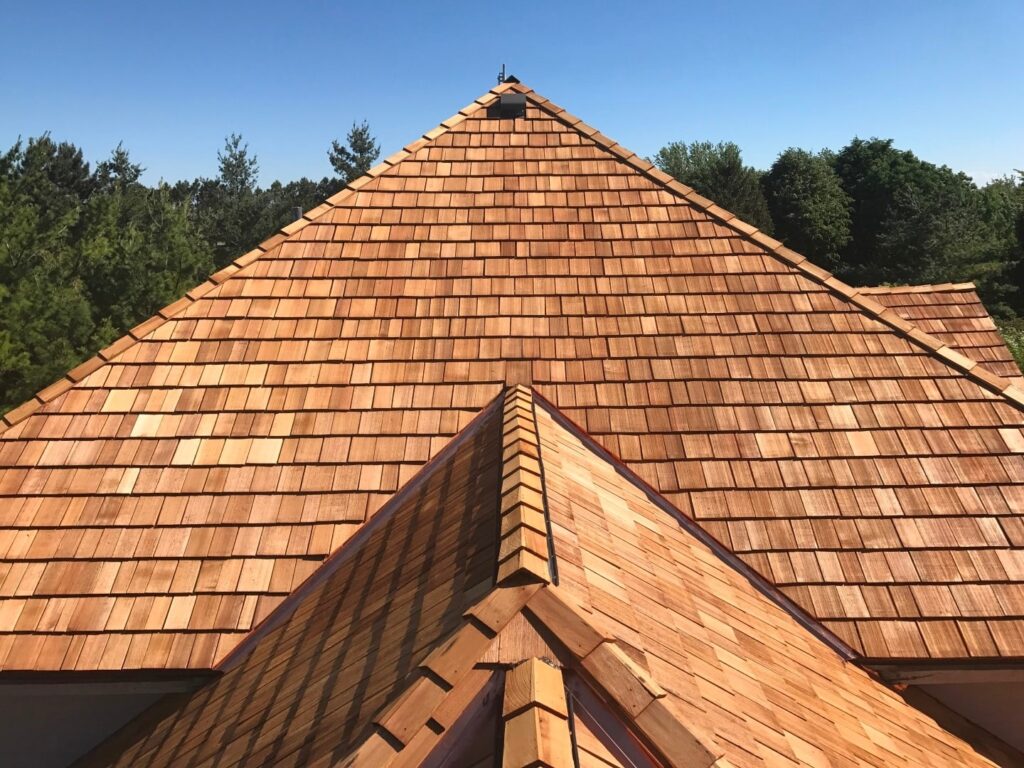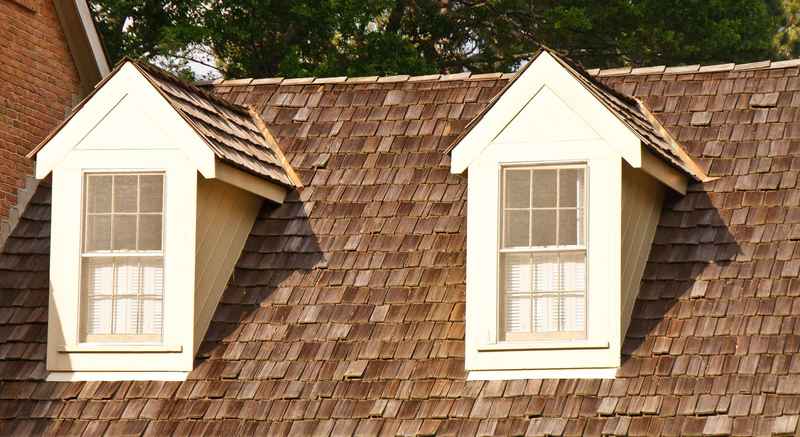Cedar shakes are one of the most sought-after roofing materials, known for their durability, rustic beauty, and long lifespan. But how are cedar shakes made? The process involves carefully selecting high-quality cedar logs, splitting them into shakes, and treating them for longevity. Understanding this process can help homeowners appreciate the craftsmanship behind their cedar roofing.
If you’re considering a cedar shake roof, knowing how they’re made and what makes them different from other roofing materials can help you make an informed decision. In this guide, we’ll walk through the entire process, from harvesting the wood to installing the final product.
Why Cedar Shakes? The Benefits of Natural Wood Roofing
Before diving into how cedar shakes are made, it’s important to understand why they remain a top choice for roofing.
The Key Advantages of Cedar Shakes
✔ Natural durability – Cedar is naturally resistant to rot, decay, and insect damage.
✔ Energy efficiency – The natural insulation properties help regulate indoor temperatures.
✔ Long lifespan – Cedar shakes can last 30 to 50 years with proper maintenance.
✔ Aesthetic appeal – The rustic, textured look enhances curb appeal.
✔ Eco-friendly choice – Cedar is biodegradable and comes from renewable resources.
Cedar shakes offer a combination of strength, longevity, and timeless beauty, making them a smart investment for homeowners.
Step 1: Selecting the Right Cedar Wood
The process of making cedar shakes starts with harvesting high-quality cedar logs. Not all cedar wood is the same—only certain types are suitable for roofing.
Types of Cedar Used for Shakes
🌲 Western Red Cedar – The most common choice due to its durability and resistance to moisture.
🌲 Alaskan Yellow Cedar – Denser and even more resistant to decay, often used in coastal regions.
🌲 Eastern White Cedar – Less common but still used for specialty roofing applications.
These trees are carefully selected from sustainable forests, ensuring long-term environmental responsibility. According to the U.S. Forest Service (fs.usda.gov), sustainable forestry practices help maintain healthy forest ecosystems while providing high-quality materials for construction.

Step 2: Splitting the Cedar Logs into Shakes
Once the cedar logs are harvested, they are cut into specific lengths, usually around 24 inches long. From there, the logs are split into individual shakes using either a handsplit or tapersawn method.
Handsplit vs. Tapersawn Cedar Shakes
| Type | Manufacturing Process | Appearance | Best Use |
| Handsplit Cedar Shakes | Split along the natural grain using a mallet and wedge | Rough, rustic texture | Traditional, rustic homes |
| Tapersawn Cedar Shakes | Cut with a saw for smoother, uniform thickness | More refined and modern look | Contemporary homes and upscale properties |
Handsplit shakes provide a traditional, rugged appearance, while tapersawn shakes offer a more refined, smooth aesthetic.
Step 3: Drying and Curing the Cedar Shakes
Freshly split cedar shakes contain natural moisture, which needs to be removed before they can be used for roofing. The drying process ensures stability and prevents warping.
Drying Methods
- Air Drying – Shakes are stacked and left to dry naturally over several months.
- Kiln Drying – Shakes are placed in a kiln to speed up the drying process, reducing moisture content in a controlled environment.
Kiln drying is preferred because it minimizes the risk of mold growth and makes the shakes more resistant to warping.
Step 4: Treating Cedar Shakes for Longevity
To extend the lifespan of cedar shakes, manufacturers often apply protective treatments. These treatments help protect against moisture, UV damage, and insect infestations.
Common Cedar Shake Treatments
✔ Fire Retardants – Improves fire resistance, making shakes safer for homes in wildfire-prone areas.
✔ Fungicides & Mold Inhibitors – Prevents moss, algae, and fungal growth.
✔ Water-Repellent Preservatives – Enhances resistance to moisture and prolongs the roof’s lifespan.
The Federal Emergency Management Agency (FEMA) recommends using fire-resistant roofing materials in high-risk areas to improve home safety. Treated cedar shakes meet these fire safety requirements while maintaining their natural beauty.
Step 5: Sorting and Grading Cedar Shakes
Before being shipped for roofing installation, cedar shakes are sorted and graded based on thickness, quality, and consistency. The grading system helps ensure homeowners get the right product for their needs.
Cedar Shake Grading Levels
| Grade | Description | Common Use |
| Premium Grade | Clear, straight grain with no knots | High-end roofing and upscale homes |
| Number 1 Grade | Mostly straight grain, few imperfections | Most residential roofing projects |
| Number 2 Grade | Some knots and irregular grain | Utility sheds, barns, lower-cost roofing |
For the longest-lasting cedar roof, Premium or Number 1 Grade shakes are recommended.

Step 6: Installing Cedar Shake Roofing
The final step is the installation process, where expert roofers carefully place each cedar shake to ensure maximum durability and weather resistance.
Key Installation Steps
✔ Underlayment Installation – A waterproof barrier is placed under the shakes to protect against leaks.
✔ Shake Placement – Each shake is installed with proper overlap to prevent water infiltration.
✔ Nailing & Fastening – Shakes are secured using corrosion-resistant nails.
✔ Ventilation Setup – Proper ventilation ensures longevity by reducing trapped moisture.
When installed correctly, a cedar shake roof can last 30-50 years with regular maintenance.
Why Choose Cedar Shakes for Your Home?
Now that we’ve covered how cedar shakes are made, it’s easy to see why they’re a popular choice for homeowners.
✔ Handcrafted and unique – No two shakes are exactly the same.
✔ Natural insulation – Reduces energy costs.
✔ Strong and durable – Resistant to extreme weather conditions.
✔ Environmentally friendly – Sustainably sourced and biodegradable.
Whether you’re looking for classic rustic charm or a refined, elegant roof, cedar shakes are a great investment in both durability and style.
Get a Free Cedar Shake Roof Inspection Today
Cedar shake roofing adds value, character, and durability to your home. If you’re considering upgrading to a cedar roof, the experts at AWS Restorations can help.
Get a free inspection now and see how a cedar shake roof can transform your home!



 (703) 426-4000
(703) 426-4000